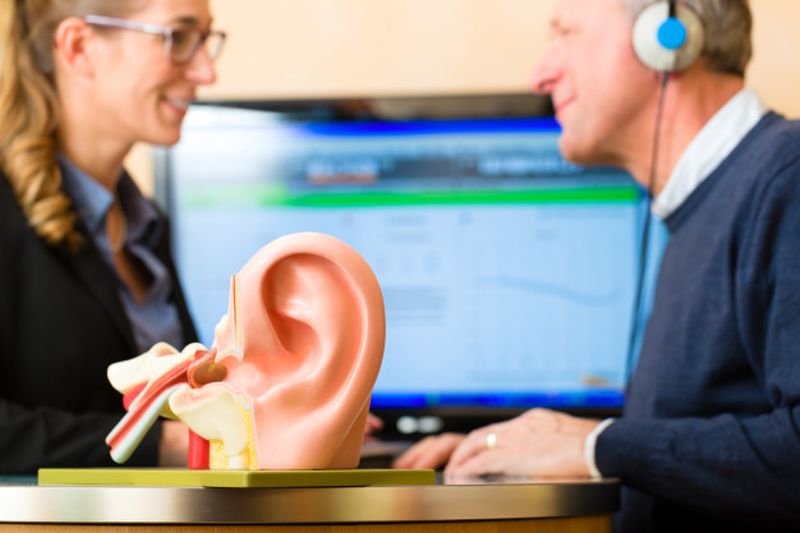
The five senses that we, as humans, have, allow us to make sense of the world around us and to interact with it. The five senses, sight, touch, smell, taste, and hearing are responsible for giving us a complete picture of the world around us.
So, what exactly happens when one of these senses are not working properly. In particular, we are interested in knowing what happens when there is a loss of hearing. It has to be mentioned that hearing aids can really help mitigate the hearing loss issue and if you are hearing impaired, you should get to know all about hearing aids.
In order to understand what exactly happens to the other senses we have when we lose our hearing, we have to first understand how exactly our brains work.
The Brain and Your Senses

Our brains are incredibly complex organs and they consist of two or sometimes even more hemispheres and these are connected with the help of a membrane. For the purposes of anatomy and physiology, the brain is normally divided into 6 parts based on the functions that each part performs. These 6 areas of the brain are known as the frontal lobe, occipital lobe, parietal lobe, temporal lobe, insular cortex and limbic lobe.
The part of the brain responsible for governing the sense of smell and sound is the temporal lobe. It really plays a significant role in how we taste things in conjunction with the olfactory nerves we have. Touch is made sense using the parietal lobe while the insular cortex handles pain. The occipital lobe is responsible for sight. The visual cues that are picked up by the occipital lobe are then processed by the temporal lobes of our brains. Therefore, we can quite clearly see that almost the entirety of our brains are involved in how we make sense of the senses around us.
The Brain and Sensory Loss

One of the most amazing and important qualities of the brain is how adaptable it is and it is especially so during our younger years. This adaptability has a name and it is known as “plasticity.” This is the name that has been given to the ability of the brain to adapt after some damage or trauma has occurred. It is responsible for retaining a majority of the original function.
The human brain should be thought of as a computer. A computer really only has a finite number of processing capabilities that you can make use of. Therefore, when you get rid of a program, the computer will have that much more processing power to work with. The human brain is very similar to this. When one of the senses of the brain has been damaged, the brain will then divert processing power to the other senses of the brain that are still working. If we were to think of it biologically, then we can see that while one part of the brain is kind of shrinking in size, other parts of the brain are increasing in size.
So, the question then arises, how exactly does this manifest itself in the brain and in human behavior. People who are blind are some of the best examples of this type of thing in action. Blind people often use “clicking” in order to “see”. This is a technique that requires the individual to make a sort of clicking noise and then listening to the echoes that the clicking creates. The echo is then translated to better understand the environment that they are in. The result is very similar to a technique known as echolocation.
For some individuals, this particular ability is developed to such an extent that they can clearly sense where objects in an environment are without touching them or bumping into them. When doctors perform imaging studies of individuals while they are engaged in “clicking,” they will find that both the auditory and the visual cortexes of the brain are in action. This is despite the fact that the person involved cannot actually “see” when we use the conventional meaning of the word.

A lot of similar things have also been noticed in people who are deaf. Due to the fact that the Auditory cortex is located within the temporal lobe (this is the place where touch and visual stimuli also get processed), they find that these functions are heightened to a noticeable extent. The freed up processing power of the brain from loss of hearing is then redirected towards the senses of vision and touch. There are other senses that will also be improved but those improvements may be slightly less noticeable as the processing centers of these senses are located in other parts of the brain.
One thing that ought to be mentioned here is that these changes are not really immediate and they are not applicable for the older adults who experience hearing loss. It will quite often take months for an individual to get used to their sensory loss and it will definitely take some time to develop the other senses in order to compensate for the loss of hearing. Children and infants will not take as long to undergo these particular changes. In the case of older adults, the time it will take for the change to take place may be much longer but it is important to remember that with time and patience, their brains will also adjust to its new needs.
In almost all cases, the type of sense that an individual will experience loss in will be either visual or auditory. These are both controlled by their respective cortexes. So, when one sense is lost, the other is usually heightened. But, the question still remains, what about all the other senses that a person has?
The olfactory nerves are responsible for controlling the senses of both taste and smell and therefore if there is damage to these nerves, it may result in a type of sensory loss. On the other hand, one of the most interesting things about this nervous system is that it regrows with time. Rather than trying to compensate for any changes that occur using the other senses, the brain will rather try to fix them.
Source: https://nanohearingaids.com/
















